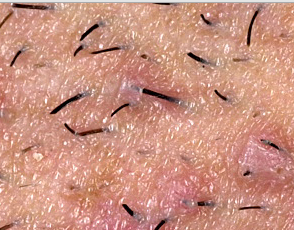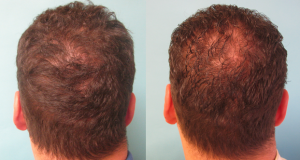When your hair curls around and can’t grow out of the skin it is referred to as an ingrown hair. This problem is commonly mistaken for pimples. Ingrown hair is known to be found on the cheeks and neck for men, especially after shaving. Women in most cases find ingrown hair on their legs and sensitive shaving areas. Those who have curly hair are more prone to getting ingrown hairs, especially because their hair can easily be curled underneath the skin preventing it from growing out properly.
 Just like what is seen with pimples, when one has an ingrown hair, it produces a small raised red bump. That bump will be itchy and many times might be sore to the touch. Treatment for ingrown hair may not be necessary at all times because ingrown hair sometimes tends to go away on its own. However, if the ingrown hair does not go away, it is best to treat it as it may leave a dark spot or scar on your skin. If an ingrown hair becomes infected, a doctor’s visit is necessary where they can safely use a needle to release the hair.
Just like what is seen with pimples, when one has an ingrown hair, it produces a small raised red bump. That bump will be itchy and many times might be sore to the touch. Treatment for ingrown hair may not be necessary at all times because ingrown hair sometimes tends to go away on its own. However, if the ingrown hair does not go away, it is best to treat it as it may leave a dark spot or scar on your skin. If an ingrown hair becomes infected, a doctor’s visit is necessary where they can safely use a needle to release the hair.
If you have scarring from an ingrown hair, it is best to see a dermatologist so they can observe the scarring and recommend treatment options for you. Some treatment options may consist of using a bleaching cream, laser treatment, microdermabrasion, or chemical peels.


